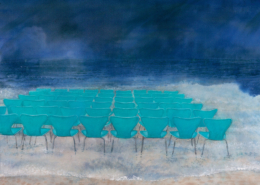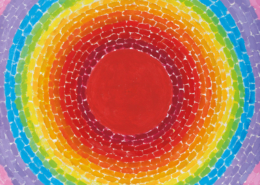 https://nsuartmuseum.org/wp-content/uploads/2024/03/image002-scaled.jpg
1866
2560
David Guidi
https://nsuartmuseum.org/wp-content/uploads/2021/03/NSU-Logo-2021.png
David Guidi2024-03-06 09:40:032024-04-11 09:24:02Louis M. Glackens: Pure Imagination
https://nsuartmuseum.org/wp-content/uploads/2024/03/image002-scaled.jpg
1866
2560
David Guidi
https://nsuartmuseum.org/wp-content/uploads/2021/03/NSU-Logo-2021.png
David Guidi2024-03-06 09:40:032024-04-11 09:24:02Louis M. Glackens: Pure ImaginationChuck Close Photographs
March 20 – October 2, 2016
Exhibition
Image Gallery
Chuck Close Photographs
NSU Art Museum Fort Lauderdale will present the first comprehensive survey of the photographic work of renowned American artist Chuck Close.
Chuck Close Photographs, on view from March 20 through October 2, 2016 features 86 images from 1964 to the present and illustrates the full range of the artist’s exploration of photography—from early black and white maquettes, to monumental composite Polaroids, to intimately scaled daguerreotypes and recent Polaroid nudes. The exhibition examines how Close, one of the most important figures in contemporary art, has stretched the boundaries of photographic means, methods, and approaches and provides an in-depth look at photography as the foundation of his creative process.
Chuck Close Photographs is co-organized by Terrie Sultan, Director of the Parrish Art Museum, Water Mill, NY, which originated the exhibition, and Colin Westerbeck, independent curator and photography scholar.
While most widely known as a painter, throughout his career Close has been deeply engaged in both photography and fine art printmaking, and these artistic approaches have informed and inspired him. Sultan notes, “The photographic origin of each Close painting is well known; however, Close’s exploration of the medium itself extends far beyond the use of photographs as a programmatic tool,. Whether he uses a photographic image as source material or as an end in and of itself, everything he creates begins with a photograph.”
Source Material
The exhibition begins with working and process materials such as contact sheets, proof sheets, photo prints, and maquettes—black-and-white or color photographs scored with ink and masking tape. On view will be contact sheet of details for Big Nude, 1967, the inspiration for Close’s first large-scale painting based on a photograph.
Polaroids and Scale
Single and composite Polaroids figure prominently in the exhibition. Works on view include 24 x 20-inch
large-format, single-image Polaroids Ray, 1979, and Self-Portrait, 1979 Known for depicting images of friends and family in his paintings, Close expanded his subject interests in his photographic work to include people he has met throughout his career, such as artists, dancers, actors, or politicians: Jasper, 1997(Jasper Johns); Robert, 1997; Hillary Rodham Clinton, 1999; Renée, 2007; Bill T.Jones, 2008, and Alec Baldwin, 2010, among others.
Scale is a particular signature in Close’s work, as demonstrated by large-format 40 x 80-inch Polaroids
such as the monumental nudes Bertrand II, 1984, and Laura I, 1984 (102 x 208 inches overall); and the 2-Polaroid Anthurium, 1987. These also provide further examples of Close’s venturing beyond portraiture with his photographs into genres including nudes and flowers.
Early Photographic Techniques
In 1997, Close turned his attention to the 19th century technique of daguerreotypes—photographs produced on a silver plate through exposure to mercury vapor. Close was intrigued by the points of intersection between that process and Polaroids: intense clarity, stunning definition, and an immediacy that allows interaction between artist and subject. Daguerreotypes such as Kate Moss, 2003 show the same extreme level of detail on a small scale as Close’s 20 x 40 Polaroids of the late1970s. The artist achieved a modern look with the technique by replacing natural light with banks of strobes. Robert, 2001, shows the subject smiling as he blinks from the intense flashes of light. Chuck Close Photographs also includes Kate Diptych, 2012 and Brad, 2012. Close created these recent works using another historic technique that has been rarely seen in decades, Woodburytypes—images formed by pressing colored gelatin onto a sheet of paper in a mold.
Accompanying Publication
The exhibition is accompanied by Chuck Close Photographer, a fully illustrated book published by Prestel Verlag with an interpretive essay by Colin Westerbeck and an interview with the artist conducted by Terrie Sultan. The publication is available at the NSU Art Museum Store.
About Chuck Close
Chuck Close, born in Monroe, Washington in 1940, received a BFA (1963) and an MFA (1964) from Yale University and, upon graduation, abandoned the Abstract Expressionist style to work with photographs as source material for photorealist paintings, notably the 21-foot-wide Big Nude (1967). Big Self-Portrait (1968), based on a Polaroid taken by the artist, was the first of what Close called “head” portraits and the beginning of his invention with the standard format Polaroid camera.
Chuck Close’s work is included in major museum collections, including the Whitney Museum of American Art, Modern Art, and Parrish Art Museum in New York, The National Gallery of Australia, the Walker Art Center in Minneapolis, Tate Modern in London, Centre Georges Pompidou in Paris.
Chuck Close Photographs is made possible, in part, by the generous support of the Lannan Foundation, Leonard Riggio, Jon and Mary Shirley Foundation, Arthur Loeb Foundation, and an anonymous donor.
The exhibition at NSU Art Museum Fort Lauderdale is supported by the David and Francie Horvitz Family Foundation with additional support provided by Sandra Muss.
Chuck Close Photographs is made possible, in part, by the generous support of the Lannan Foundation, Leonard Riggio, Jon and Mary Shirley Foundation, Arthur Loeb Foundation, and an anonymous donor. The exhibition at NSU Art Museum Fort Lauderdale is supported by the David and Francie Horvitz Family Foundation with additional support provided by Sandra Muss.
Exhibitions and programs at NSU Art Museum Fort Lauderdale are made possible in part by a challenge grant from the David and Francie Horvitz Family Foundation. Funding is also provided by Nova Southeastern University, Broward County Board of County Commissioners as recommended by the Broward Cultural Council and Greater Fort Lauderdale Convention & Visitors Bureau, the State of Florida, Department of State, Division of Cultural Affairs and the Florida Council on Arts and Culture. NSU Art Museum is accredited by the American Alliance of Museums.























